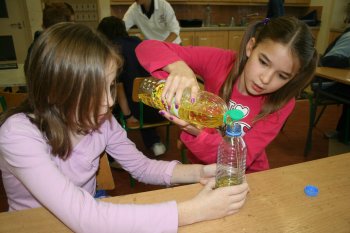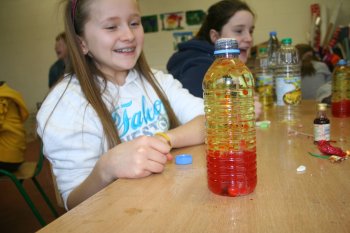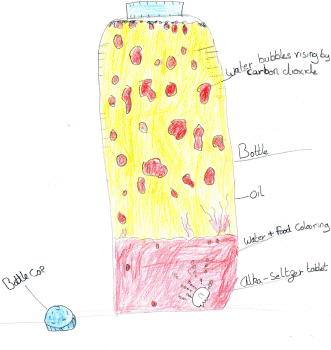1 - 3. Water Tension | 4. More Water Tension | 5. All About Electrolytes | 6. Hydrolysis | 7. A Cartesian Diver | 8. A Lava Lamp See how we built our Young Scientist computer. Water Experiment 8 A Lava Lamp
Materials:
You will need:
Plastic Bottle (500 mls)
Method:
What you have to do::
1) Fill the plastic bottle about three quarters full with cooking oil
.2) Top up with water. The water is considerably denser than the
oil, so it should flow to the bottom of the bottle.
3) Add approximately 10 drops of food colouring to the bottle. The
colouring has the same density as the water, so will sink through the
oil and enter the water.
4) Add half an Alka-Seltzer tablet to the bottle.
5) Observe.
Result:
The food colouring mixes with the water and
bubbles up through the oil and then falls back down in droplet form.
Conclusion:
The Alka-Seltzer tablet reacts with the water and creates carbon
dioxide. The carbon dioxide particles latch on to the water making it
rise through the oil in drops. The bubbles of carbon dioxide burst when
they reach the surface of the oil and their payload - the drops of
coloured water - fall back through the oil because water is denser than
the oil.
Warning -
Sixth |

 Experiment:
To show how to make a lava
lamp
Experiment:
To show how to make a lava
lamp
